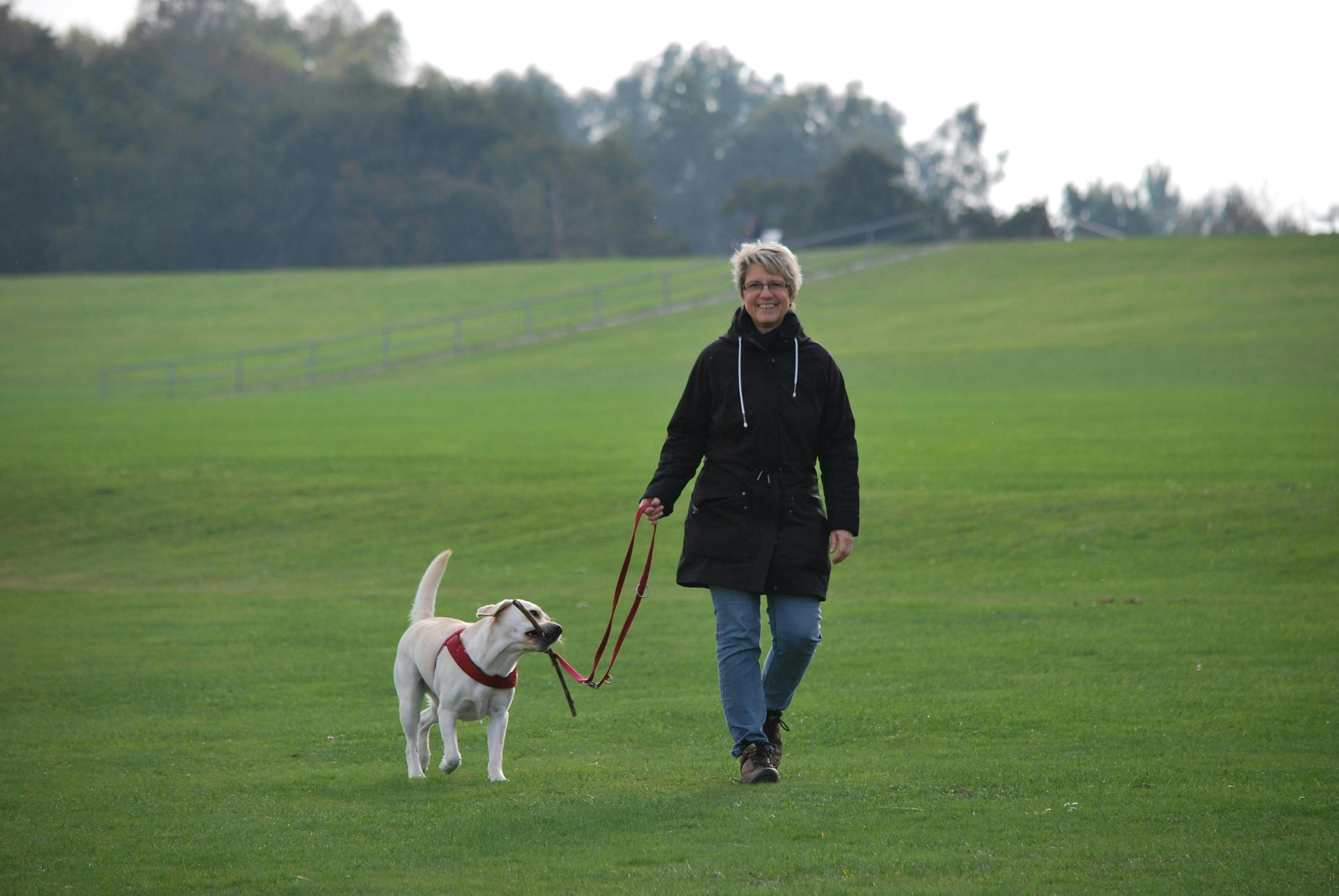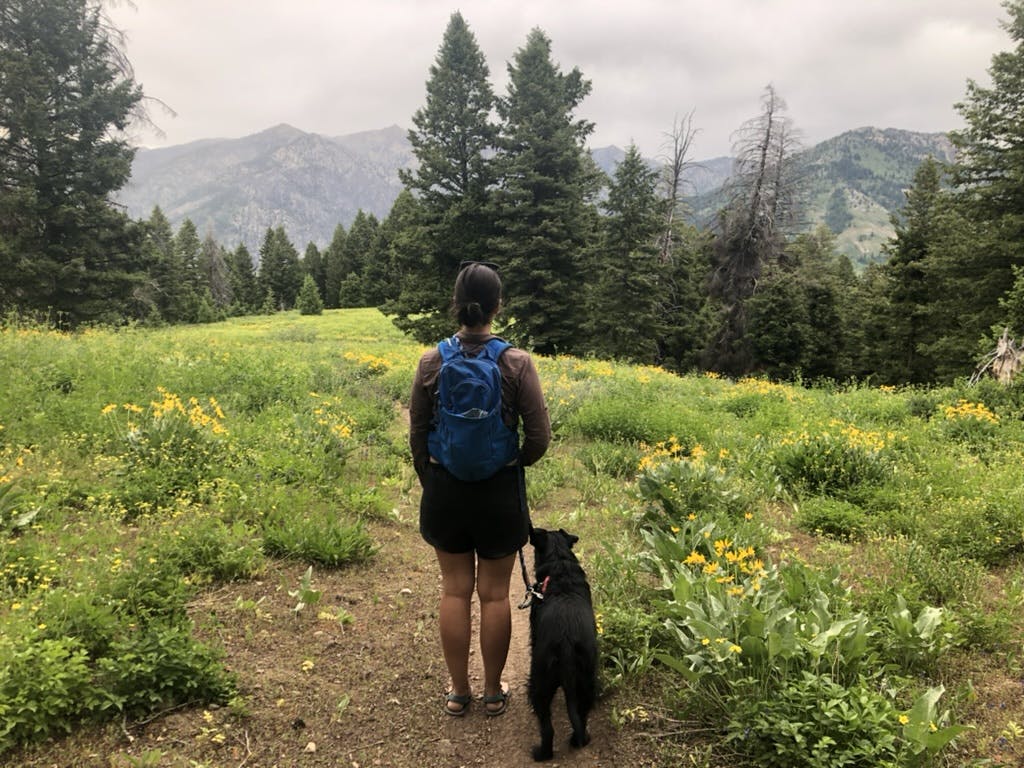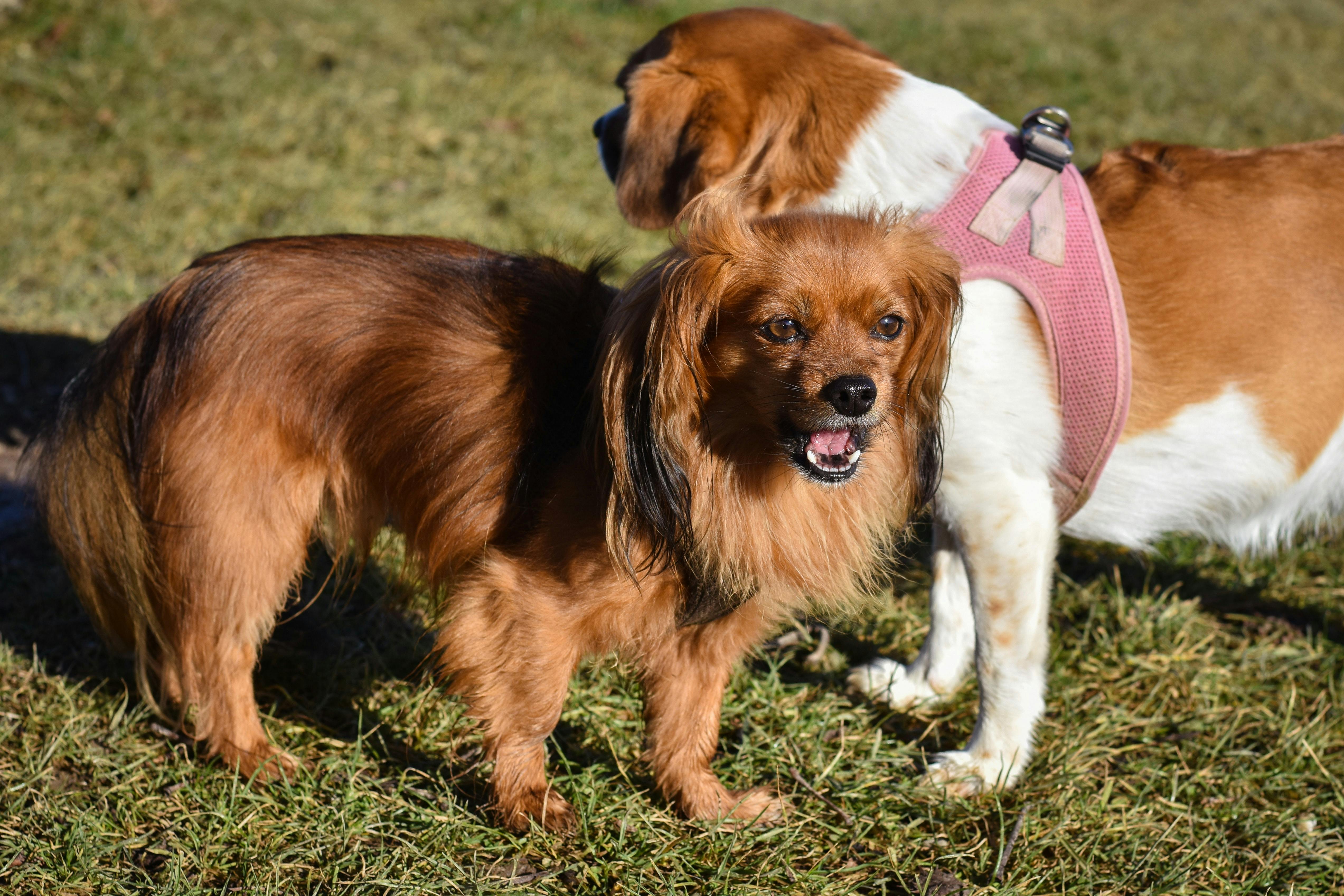How to Take Care of Yourself While Owning a Reactive Dog
Reactivity | By: TAYLOR WYLLIE, KPA CTP | Jul 28, 2024

Get Your Free Reactive Dog Masterclass
Unlock the secrets of rehabilitating your reactive dog with this masterclass video
Owning a reactive dog is hard.
I won’t lie—adopting my reactive dog, Scott, has negatively impacted my life in numerous ways. Of course, I can list so many benefits of sharing my life with Scott too. In fact, I now believe the good things vastly outweigh the bad.
But I still have hard days.
Over the past four years, I’ve faced many tough times and even regretted adopting him at various points. (It’s difficult to admit, but true.)
Many of my clients with reactive dogs have expressed similar sentiments—the regret, the frustration, the mental fatigue, the feelings of dejection, embarrassment, and heartbreak, and even the loneliness that can come with owning a reactive dog.
We all love our dogs, so it can be tough to discuss the challenges they’ve brought into our lives. But burying all the frustrations and negative feelings isn’t a healthy coping mechanism (trust me, I tried it).
So, let’s talk about it.
In a previous post, I shared my reactive dog story and opened up about how difficult it has been, especially in the beginning.
Today, I want to talk about tips on how to take care of yourself while living with a reactive dog.
I want to note that I'm not a mental health professional. These tips come from my personal experience living with my reactive dog and working with others facing similar challenges.
So, let’s dive in.
Be Kind to Yourself
Living with a reactive dog can be incredibly demanding, both emotionally and physically. It’s important to remember that you’re doing your best, even when it feels like you’re not doing enough or that you don’t know enough or that your dog’s progress isn’t where you want it to be.
Be patient and forgiving with yourself, especially on the tough days. Celebrate the small victories and acknowledge your efforts. Self-compassion is vital; you’re navigating an arduous journey, and it’s okay, expected even, to stumble.
Accept that It’s Hard Work

Rehabilitating a reactive dog is difficult. Training involves many nuances, sometimes requires resources you might not have (like access to calm decoy dogs), and takes time and consistency. Acknowledge that this is challenging! You’re not expected to be perfect at it. Accepting the difficulty of the task can make it easier to be kind to yourself, to allow yourself necessary breaks, and may make you feel okay seeking out professional help. It’s okay to ask for assistance—this shit is hard!
Take Training Breaks
There will likely be times when you have the energy, time, and desire to train and rehabilitate your dog. That’s awesome—take advantage of those times! But there will also be times when the idea of doing more training sessions feels overwhelming. That’s awesome too. Give yourself permission to take a break and recharge. Reactive dog training is a marathon, not a sprint, which means you can slow down and take those breaks when you need them without feeling guilty. Listen to your needs and remember that rest is an essential part of the process.
Remember, Dogs are Resilient
During my rehabilitation journey with Scott, I’ve taken several virtual training classes with Dr. Amy Cook. She once said something that really stuck with me—dogs are resilient. If you make a training mistake, accidentally overstimulate your dog, or they have a major reaction (or several), all is not lost. Dogs, even our sensitive reactive ones, are remarkably resilient. Don’t beat yourself up over mistakes. Take a breath, take some time to recover, give your dog some decompression days, and know your dog will likely bounce back faster than you.
You Don’t Need to Aim for Perfection
You don’t need to aim to take your dog from a reactive pup who can’t stand the sight of other dogs to one that can easily hang at dog parks. Instead, aim for something that feels manageable for both you and your dog.
I’ll be honest, my dog isn’t as “rehabilitated” as he could be—we could probably do more behavior modification sessions with other dogs to help him get even more comfortable with dogs—but he’s in a good enough spot. He doesn’t react to people, bicycles, cars, or skateboarders anymore. And he dismisses dogs far easier than he used to, making walks relaxing a majority of the time. And when he seems to be stuck on a dog, playing “find-it” easily breaks his attention and calms him down. For now, I'm okay with this. Aim for realistic progress that works for your lifestyle.
Find a Community

Navigating life with a reactive dog can feel isolating, so finding a community can make a big difference. Look for both in-person and virtual reactive dog groups where you can share experiences, ask questions, and gain encouragement. In-person groups are my personal favorite—I started one a few years ago that really helped me feel less alone. Of course, they can be difficult to find. You could try attending a reactive dog class that uses exclusively fear-free methods (if one is available in your community) and go from there. Or you could always start one like I did!
Virtual communities can also be great—there’s an active reactive dog presence on Instagram especially. Accounts like The Toby Project aren’t afraid to talk about the reality of owning a reactive dog—the good and the bad and the mistakes along the way. Her transparency, again, helped curb that feeling in me that I was in this alone. Just be cautious. Sometimes social media can make you feel like you’re not doing enough or offer bad advice.
Either way, surround yourself with people that are positive, supportive, and align with your training philosophy. A community is huge for helping you feel less alone and more empowered on your journey.
Be Truthful to Family and Friends
Be vulnerable and share what you're going through with your family and friends. Most people don’t know what it’s like to have a reactive dog and, without meaning to, can say some pretty thoughtless things (like asking if you’ve tried teaching your dog to sit as a solution...). Your loved ones want to support you, so help them understand your experience by being open about the challenges you’re facing. And we need strong support systems to help us navigate this difficult journey!
Consider Therapy
Dealing with a reactive dog can be emotionally taxing, and seeking professional help for yourself can be incredibly beneficial. I did EMDR therapy to help move past a traumatic incident I had with my reactive dog, and it was massively helpful. Before therapy, I used to battle my own anxiety on walks, not just my dog’s, which made everything worse. Therapy can help you process your emotions and reduce your anxiety, making it easier to support your dog effectively. Don’t hesitate to consider this option if you’re struggling, as seemingly silly as it seems to go to therapy over a dog (at least that's how I used to feel).
Use Management
Similar to what I said about not aiming for perfection, it’s perfectly okay to rely on management techniques. These strategies can help you and your dog navigate daily challenges without the pressure of constant training—whether it’s using barriers (we keep a gate around our front door), muzzles, or active management techniques like find-it or a hand target on walks. Remember, these methods are not a sign of failure but a smart approach to creating a safe and stress-free environment for both you and your dog. Embrace management as a valuable part of your toolkit.
Enjoy Activities Without Your Dog
Give yourself permission to enjoy activities that don’t involve your dog, especially those you once dreamed of enjoying together before you knew your dog was reactive. I used to feel guilty taking long walks without my dog, but I realized those walks overstimulated him, and I was so stressed about managing him that I didn’t enjoy them myself. Now, I take my long walks solo, with friends, or with my partner. Because I fulfill my needs away from my dog, when I walk him, it’s for him and not me. I choose routes and environments that meet his needs, ensuring a positive experience for both of us. This balance allows you to enjoy your favorite activities without stress and ensures your dog gets the tailored care and attention they need.
Find a Trusted Dog Sitter
I love camping and backpacking. My dog can’t handle the stresses of these activities, so I leave him at home with a trusted sitter. Look for a sitter who understands your dog’s specific needs and is comfortable managing their behavior. This could be a professional pet sitter, a friend, or a family member. Being able to leave your dog for a few days can make it easier for you to do whatever you need to to recharge.
Find Activities to Enjoy with your Dog

Conversely, it’s important to find ways to enjoy time with your dog, even if they look different than you originally expected. For me, this means taking my dog on “sniffaris,” where he gets to explore and sniff to his heart’s content, and doing trick training sessions. These activities not only cater to his needs and interests but also strengthen our bond and make our time together enjoyable and fulfilling. You and your dog might enjoy scent training classes, swimming in remote rivers or lakes, or sharing a plate of spaghetti. Find activities that suit both your and your dog’s personality and preferences, and you’ll both benefit.
Think Big Picture
It's easy to get lost in the day-to-day challenges, but try to focus on the overall trend of your dog’s improvement. Remember that small setbacks and backslides are typical and not something to get upset about. (Although major setbacks over months are a sign that you should probably change your training plan or consult a professional.) Progress isn’t linear! Keep an eye on the bigger picture and celebrate the gradual improvements your dog makes over time. By maintaining a long-term perspective, you’ll find it easier to stay motivated and positive, even during the tough times.
Conclusion
Living with a reactive dog is challenging, so it’s vital to take care of yourself throughout the journey to avoid burning out. Trust me—I've been there, and it’s not fun.
Remember, you’re not alone, and with patience and self-care, you can navigate this journey successfully.
Thank you for being part of our community and for your dedication to your dog’s well-being.
Take care!









